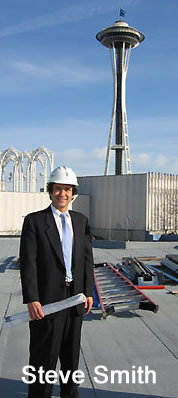About

COMPANY PROFILE
For 35+ years Steve Smith and his team have been building an impressive resume of achievement and success in the multifamily industry. By carefully assessing each step in the development process—from market research and site selection to design, construction, marketing and customer service—they have delivered high-quality apartment, condominium and mixed-use projects that have commanded premium pricing. Steve’s track record includes over 40 different projects totaling nearly 4,000 dwelling units. This includes projects that he developed and built and also projects that he only entitled and then sold to other developers who later built the project. In 2005 the company entered the affordable senior apartments market by teaming up with SHAG (the Senior Housing Assistance Group) to build the 206-unit Cedar Park apartments in Seattle’s Lake City neighborhood. This project was financed utilizing state tax-exempt bonds and federal tax credits allocated by the Washington State Housing Finance Commission. The project was completed in 2008 and has enjoyed remarkable success, achieving 95% occupancy in an otherwise difficult rental market for landlords.
STEVE SMITH, PRESIDENT
A native of Seattle, Steve Smith developed his first apartment project in 1987 while simultaneously attending the University of Washington and working as a commercial real estate broker. In 1995 he received his Bachelor of Arts from the university’s Henry M. Jackson School of International Studies and continued his burgeoning career in multifamily housing. Steve’s focus has always been on urban revitalization. In the late 1990s, Steve’s company at the time, The Fortune Group was the most prolific developer of multi-family projects (including Entitlement Projects) in the city of Seattle. Virtually all projects were (and continue to be) high-density developments in the various neighborhood urban centers dotting the Puget Sound area. This type of development is considered to be very “green” due to its relatively low impact on the environment. Land usage is minimal, with some projects achieving density of 200 units per acre. Unit sizes are compact yet efficient. And due to the projects’ convenient locations, many residents find they no longer need to own personal vehicles, instead relying on the many other transportation options.
